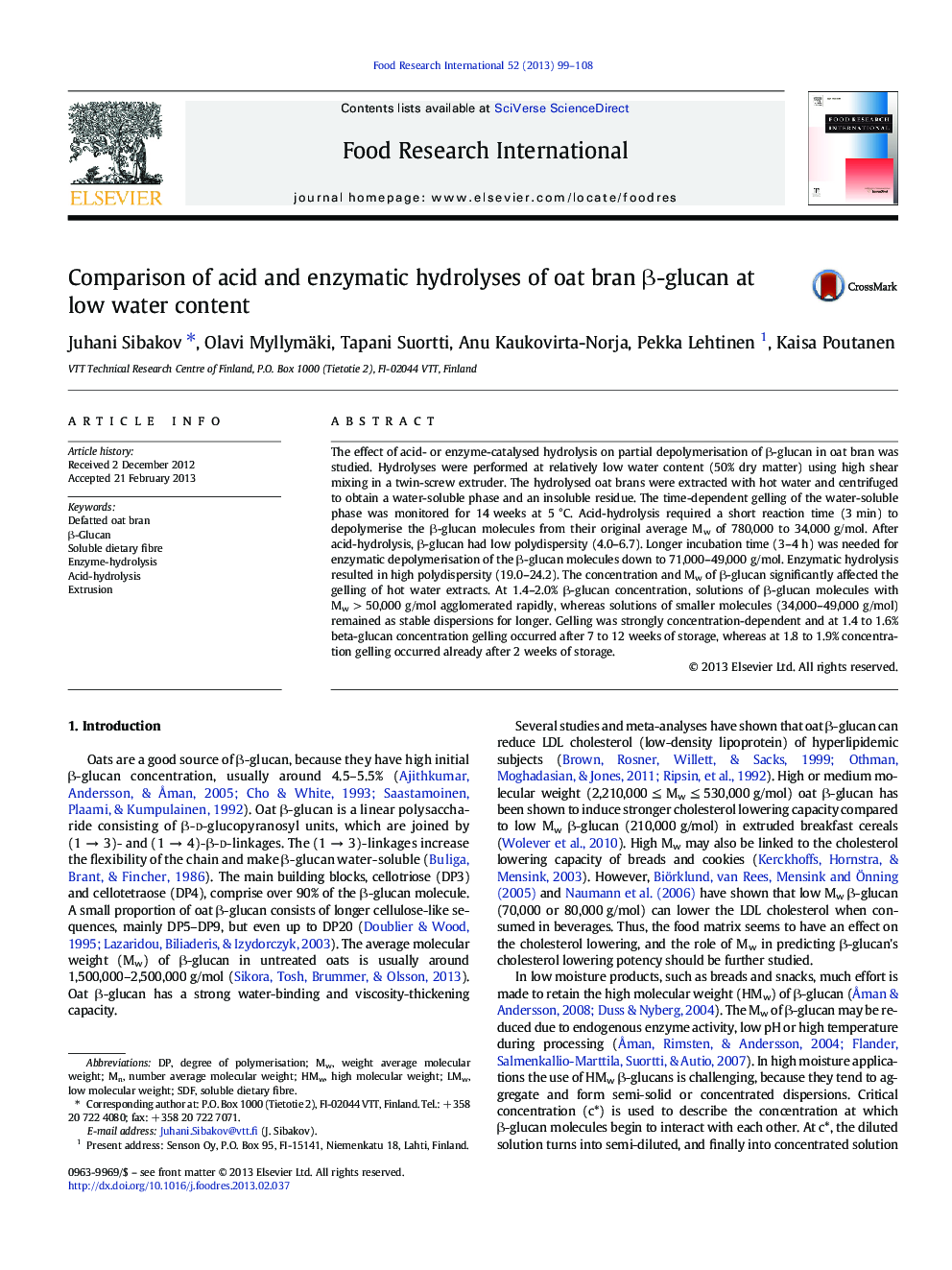| کد مقاله | کد نشریه | سال انتشار | مقاله انگلیسی | نسخه تمام متن |
|---|---|---|---|---|
| 6398188 | 1330681 | 2013 | 10 صفحه PDF | دانلود رایگان |
عنوان انگلیسی مقاله ISI
Comparison of acid and enzymatic hydrolyses of oat bran β-glucan at low water content
دانلود مقاله + سفارش ترجمه
دانلود مقاله ISI انگلیسی
رایگان برای ایرانیان
کلمات کلیدی
SDFLMWHMWβ-glucan - β-گلوکانAcid-hydrolysis - اسید هیدرولیزExtrusion - اکستروژنdegree of polymerisation - درجه پلیمریزاسیونsoluble dietary fibre - فیبر غذایی حلالhigh molecular weight - وزن مولکولی بالاWeight average molecular weight - وزن مولکولی متوسط وزنNumber average molecular weight - وزن مولکولی میانگینlow molecular weight - وزن مولکولی کم
موضوعات مرتبط
علوم زیستی و بیوفناوری
علوم کشاورزی و بیولوژیک
دانش تغذیه
پیش نمایش صفحه اول مقاله

چکیده انگلیسی
The effect of acid- or enzyme-catalysed hydrolysis on partial depolymerisation of β-glucan in oat bran was studied. Hydrolyses were performed at relatively low water content (50% dry matter) using high shear mixing in a twin-screw extruder. The hydrolysed oat brans were extracted with hot water and centrifuged to obtain a water-soluble phase and an insoluble residue. The time-dependent gelling of the water-soluble phase was monitored for 14 weeks at 5 °C. Acid-hydrolysis required a short reaction time (3 min) to depolymerise the β-glucan molecules from their original average Mw of 780,000 to 34,000 g/mol. After acid-hydrolysis, β-glucan had low polydispersity (4.0-6.7). Longer incubation time (3-4 h) was needed for enzymatic depolymerisation of the β-glucan molecules down to 71,000-49,000 g/mol. Enzymatic hydrolysis resulted in high polydispersity (19.0-24.2). The concentration and Mw of β-glucan significantly affected the gelling of hot water extracts. At 1.4-2.0% β-glucan concentration, solutions of β-glucan molecules with Mw > 50,000 g/mol agglomerated rapidly, whereas solutions of smaller molecules (34,000-49,000 g/mol) remained as stable dispersions for longer. Gelling was strongly concentration-dependent and at 1.4 to 1.6% beta-glucan concentration gelling occurred after 7 to 12 weeks of storage, whereas at 1.8 to 1.9% concentration gelling occurred already after 2 weeks of storage.
ناشر
Database: Elsevier - ScienceDirect (ساینس دایرکت)
Journal: Food Research International - Volume 52, Issue 1, June 2013, Pages 99-108
Journal: Food Research International - Volume 52, Issue 1, June 2013, Pages 99-108
نویسندگان
Juhani Sibakov, Olavi Myllymäki, Tapani Suortti, Anu Kaukovirta-Norja, Pekka Lehtinen, Kaisa Poutanen,